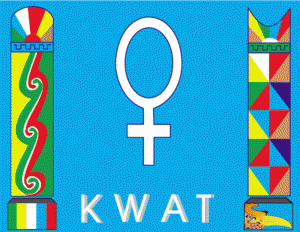Q&A with Mai
Questions for Mai
- What are the overhead costs to run and maintain KWAT on a daily basis?
KWAT’s annual budget is around 350,000 USD. Daily basic costs are not the same everyday as we work for different activity on different days.
- Is there a way to measure the success of the reproductive health training project from last year? Has family planning improved?
RH training from last year, we invited all the community religious leaders to the training. They all shared this knowledge of family planning methods and reproductive health issue in their respective community. Some of them are school teachers, so they teach to the students in summer school. For family planning, we could not follow up with any supplies, therefore even though people may gained knowledge, it is not easy to access supplies. Thus we learned we need to follow up activities afterwards.
- What is the state of gender equity in the region? Is it progressing for women?
In our region, gender equality is still in struggling. Especially Kachin society is male dominate system. However, as Kachin community based organizations conduct gender equality awareness trainings, human rights trainings, some of our community is aware of the issue but still cannot accept fully.
- What is the one thing KWAT needs most right now?
Now, the most one thing we need is to help stop the war in Kachin state and providing health care, food, education and rehabilitation for IDPs.
- What is KWAT’s political stance and how do they think that the conflicts should be resolved?
KWAT is not a politically related organisation and did not do politic directly but we do advocate to our people and international communities about real situation in Burma. We mainly work as community based organisation which is working mainly for advancement and empowerment of Kachin women and children.
- What progress has KWAT seen over the past few years?
In the past few years, we have been working continuously towards our goal which is advancement and empowerment for Kachin women and children in Kachin communities. Our objectives, we are working hard in each program at KWAT. We have trained about 100 Kachin youth for human rights and democracy. We have helped empower migrant community in Chiangmai. We have helped trafficked women in rehabilitation. We have helped food, shelter, and health care for about 20000 IDPs around Maijayang and Laiza. We have advocate to international communities about reality in Burma. So, with those works we hope that we helped made some positive changes for our community.
- How many people come through your organization weekly seeking help?
In our organisation, currently the service providing activities has two kinds. One is safe house for trafficked women, and another one is our clinic. In the shelter, there is no weekly access but as the case occurs, needed services are provided. In the clinic, there are about 300-400 patients per month access. But this is not included our outreach patients.
- When was the most drastic chance in the IDP camp conditions?
When the war started in 2011 June, when IDPs ran the very first time, that was the time that they had no help and very difficult. Now it is in different situation, they have somehow shelter but not enough food. What I mean in not enough is that it is not healthy enough for them that they sick often, we see as malnutrition. As the fighting is still continuing, the conditions in camps are still worse as new IDPs coming everyday.
- Have you ever become particularly emotionally invested in one of the survivor’s stories?
We have many true stories but here is one. A 23 days old baby was in the jungle for 2 days crying all days and nights because his mother was shot and dead by Burmese soldiers while they were fleeing. So this baby was picked by his father after two days and the baby was still alive but need extra medical care. His body was all sun burned and turned dark. Our clinic had taken care of this baby for three months. His father cried a lot whenever he saw the baby. So our clinic nurses keeps and take care of the baby in the clinic. At nights, the baby slept with one nurse after another. The baby never slept when he was not hug. Now this baby is in good health and staying with his adopted parents.
- Is the clinic at risk for being attacked?
Our original clinic is in attacking area and now we moved to Maijayang. In this place it is also not a very safe place. People still need to hide in the bunkers when helicopters come.
- What is the biggest resource that the IDP camps lack?
It is Food and Health Care.
- Can we have more details on exactly what services the clinic provides (surgery, mental health care, etc)?
In our clinic, we do not have doctors yet. We have well trained Health Assistant nurses, Emergency Mother Obstructed Care nurses, and Mother and Child Care nurses. They mainly treat mothers and children, delivery, and do some small surgery in the clinic. We do counseling as well. We said mother and children but as many other general sick people come to clinic, we treat general too. For major surgery, we refer the patients to hospitals.
- What are the origins / what is the history behind the formation of KWAT?
In Burma the military regime has been in power for several decades, resulting in armed conflict with the various minority ethnic people including the Kachin, who occupy the northernmost state on the China border. The Kachin Independence Army was the first to negotiate a ceasefire with the junta in 1994 but promises of investment in the infrastructure in Kachin State have not been realised. Instead, the military regime has authorised and benefitted from large-scale extraction of Kachin’s natural resources – timber, gold, jade and HEP – and these benefits are not shared with the Kachin people. Mismanagement of the economy, the prioritising of military expenditure over public services, spiralling costs of basic commodities as well as schooling and medical care, are making it increasingly difficult for people to survive so many Kachin people, mainly young men and women, have left their homeland and scattered to foreign countries.
The number of Kachin people coming to Thailand is growing year on year and the social and economic problems in the Kachin community have also increased accordingly. Recognizing the urgent need for women to organize themselves to help solve these problems both in Kachin State and in Thailand, five far-sighted women formed the Kachin Women’s Association Thailand (KWAT) in Chiang Mai on the 9th September 1999.
- Why did KWAT choose to focus on solely women and not men? (sort of related to the last question)
KWAT choose to focus on women because in Burma and in Kachin community regarding to our culture and religions, women have less opportunity to go to school, to get jobs, to be in decision making person, to be in politics, and to be in ledership roles. From every angle, women are oppressed in Burma thus we focus to work for women.




